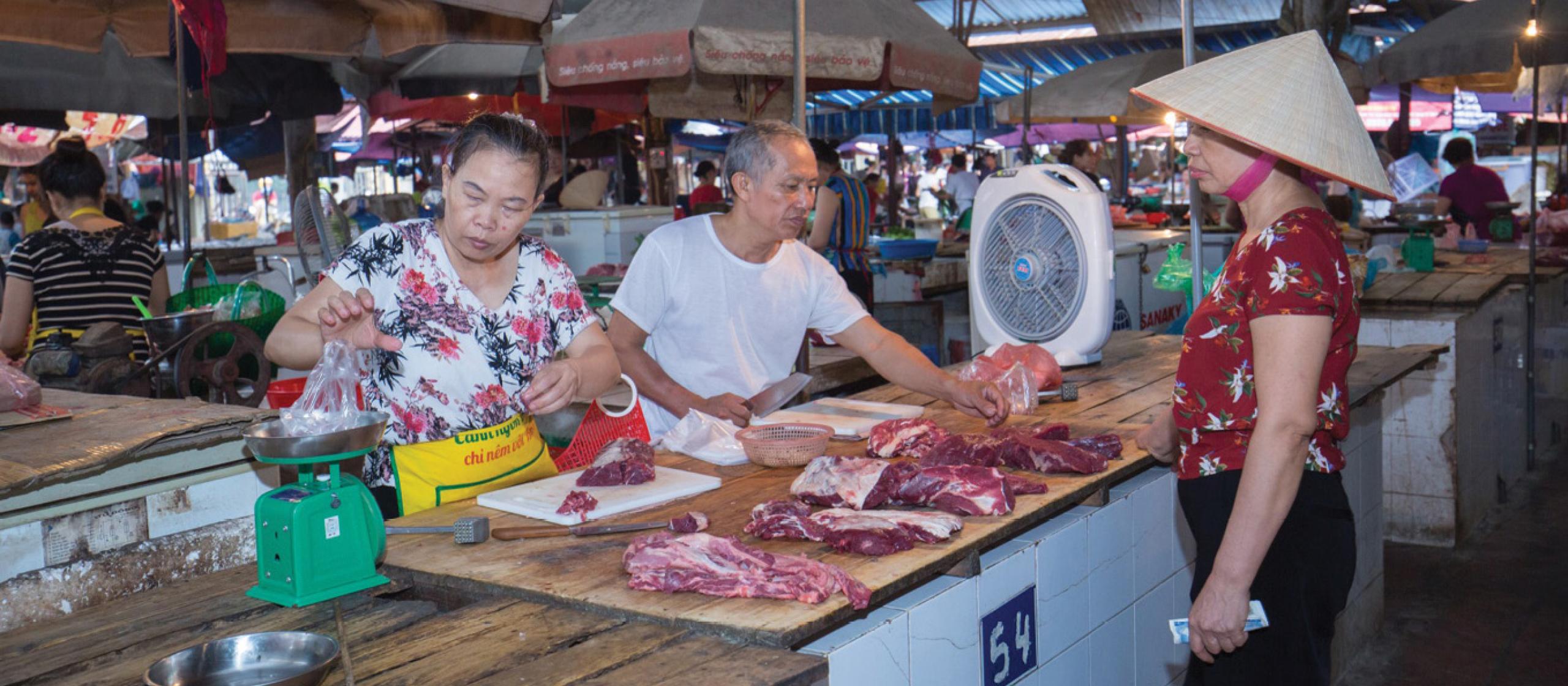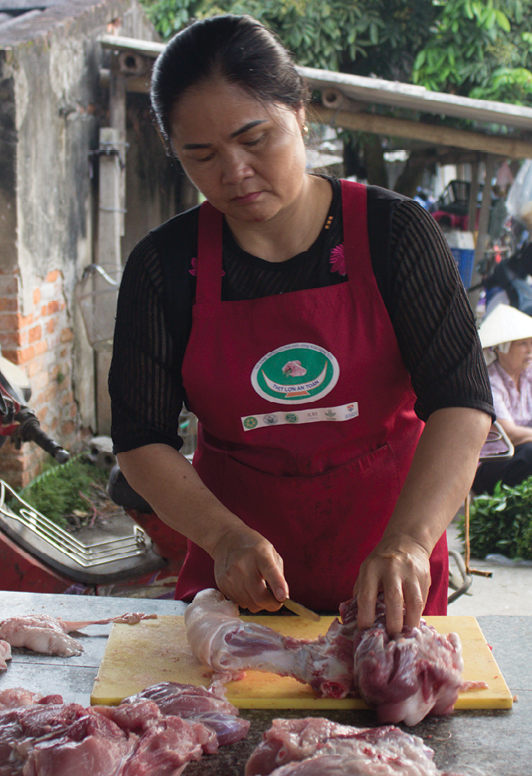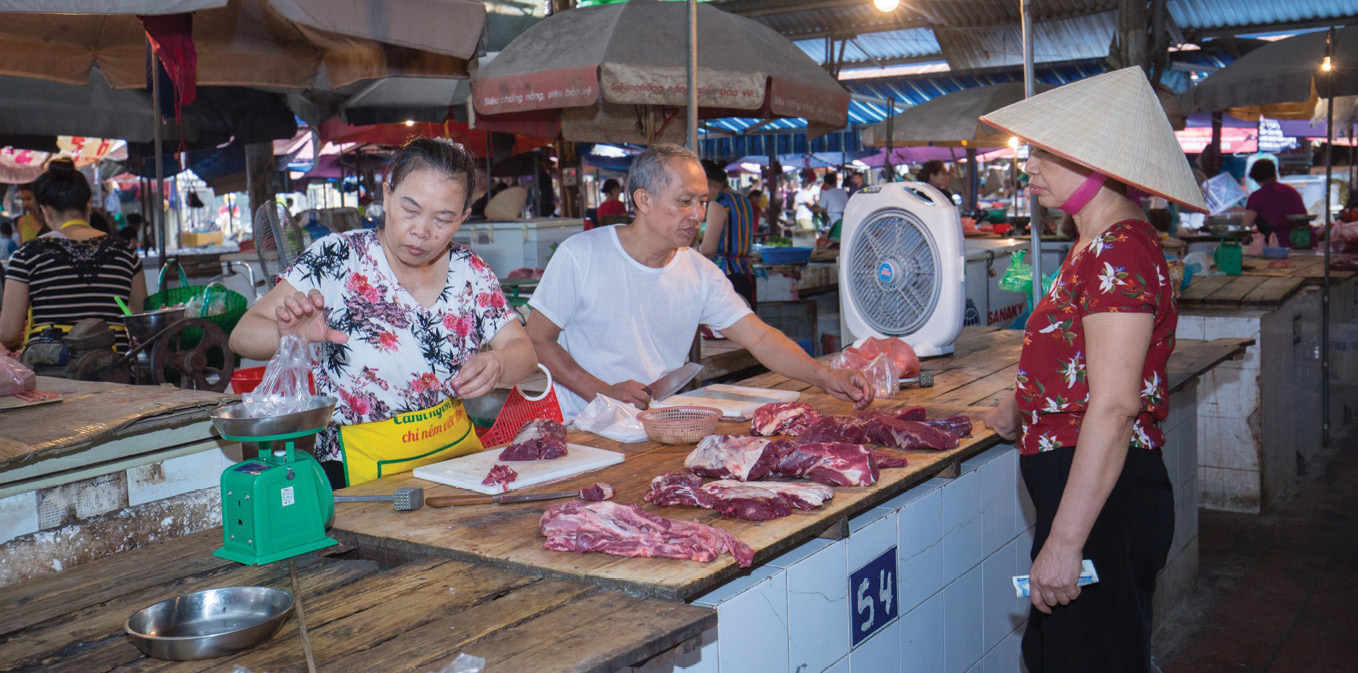The popularity of pork makes it the most important animal protein source for Vietnamese consumers. A previous ACIAR-funded project identified a significant health risk, with up to 2 of every 10 pork consumers experiencing illness from food-borne diseases annually.
Funded by ACIAR, SafePORK is a collaboration between the International Livestock Research Institute, Hanoi University of Public Health, University of Sydney, Vietnam National University of Agriculture and National Institute of Animal Sciences. It aims to develop and test low-cost interventions to make pork safer for the community.
Pork has been a key staple protein in Vietnam for many years. It is also popular during festival periods and, for consumers, it’s versatile for home cooking.
‘About 80% of Vietnamese people eat pork every day so the project has a huge opportunity to create positive change for consumers,’ says Dr Pham Duc Phuc, Deputy Director of the Centre for Public Health and Ecosystem Research at Hanoi University of Public Health.
For producers, pigs require less land to raise than cattle or goats. Small-scale producers may be raising pigs primarily for their own households, knowing they can easily sell excess meat.






